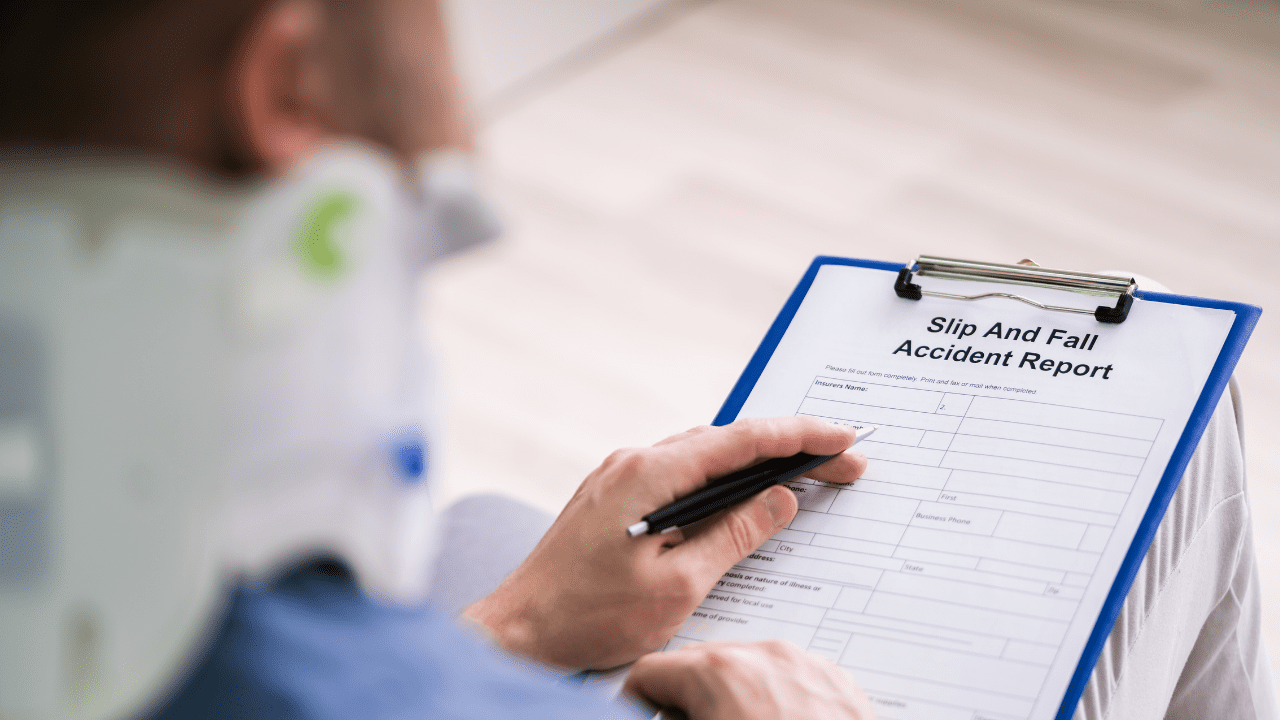5 Things to Know About Slip and Fall Settlements

Slip and fall accidents happen – sometimes when the floor is slippery or recently mopped, and other times by tripping over our own feet. No matter what the cause is, there are certain factors that are useful to know about settlements in Slip and Fall cases that can dramatically affect the outcome.
Evidence is Key
Settlement offers rely on the evidence that is available and how it relates to the strength of the case being made. Some types of evidence are more straightforward than others. For example, security footage of a spill in a grocery store aisle that goes unattended for several hours before someone slips and falls can be fairly strong evidence pointing towards the corporation being at-fault in this accident.
Other types of evidence, like evidence related to medical health, takes more time to develop and assess the outcome. For example, a victim may be offered one level of financial compensation for injuries that did improve with immediate medical care and rehabilitative therapy, but would be offered a different level of financial compensation for injuries that did not or could not be improved with medical or recovery care.
You should also know that evidence can be used to prove economic or non-economic damages. Physical receipts like bills and invoices prove economic damages. However, doctor’s notes, personal journals, medical prognosis, incident reports, and more, can be used to prove non-economic damages. And conversely, the insurance company can rely on your social media posts to refute claims you may have concerning non-economic damages.
There are Multiple Types of Compensation
In a slip and fall case, you may have the right to be compensated for your injuries. However, in the legal sense, your injuries may include more than just physical suffering. Some types of compensation you can receive include:
- Medical bills for doctor’s appointments, diagnostic therapy, physical or rehabilitative therapy, co-pays, medications, etc.;
- Loss of wages and/or loss of future wages;
- Emotional pain and suffering, loss of self-esteem, and loss of consortium;
- Miscellaneous expenses that resulted from injuries suffered after the accident, including home maintenance, housekeeping, dog walking, childcare, and more.
The Burden of Proof is On You
In civil cases, the person who has been wronged and is making allegations against someone else has the burden of proving those allegations. So, in a slip and fall case, the person who fell has the burden of proving that someone else is responsible for the fall.
Generally, the stronger your evidence, the better chance you have at settling a slip and fall case with an opposing party. In most civil cases, the burden of proof is met by a “preponderance of the evidence,” – that is, that it is more likely than not that the allegations being made are true. This does not mean that someone must prove a case with 100% certainty. However, even presenting enough evidence to support a statement with 51% certainty can be incredibly difficult.
The burden of proof in a slip and fall case requires knowing three things. First, What the injuries are. Second, How the fall was caused. Lastly, who is responsible for the hazard. Sometimes, more than one person or entity is responsible for the hazard. For example, imagine an uneven or broken sidewalk on a public street that causes an individual to fall and sustain injuries. The original contractors who poured the concrete for the sidewalk may be responsible for poor construction. The city may be responsible for not maintaining safe walkways for pedestrians or failing to fix the issue. And the victim may be partially responsible if they saw the broken part of the sidewalk and ignored the risk. Or if they intentionally tried to sustain an injury.
Timelines Vary
Slip and fall lawsuit accident settlements can take as little as a few months or as long as a few years, all depending on the complexity of the case. You can read a more in-depth blog post, How Long Does it Take to Settle a Personal Injury Case. Reading this will teach you more about why some cases take a very long time before anyone gets their day in court. Some insurance companies may try to settle a lawsuit quickly with a low-ball offer that may not cover future bills or medical needs. By accepting this offer, the timeline for your case is very short. But, by doing so, you forego any additional compensation. This additional compensation you might receive if you take the time to present a case. In your case you can demand compensation that more accurately reflects the damages you incurred.
Sometimes, settlements happen the morning before the commencement of trial. This is especially true for more complex situations where multiple parties may be involved. Additionally, where the physical health of the victim may have been complicated by, for example, medical malpractice during treatment.
The Severity of Your Injuries is the Biggest Factor
The most important thing to know about slip and fall accidents and settlements is that the severity of your injuries in the biggest factor in determining the size of your payout. If your injuries were catastrophic, then an opposing party will be more interested in settling a case. Settling the case will is to avoid a massive financial verdict in a personal injury case. If the injuries were fairly mild or the victim recovered quickly, then the payout will be significantly smaller.
Contact a Slip and Fall Injury Attorney Today
Slip and fall accidents happen. If you have recently incurred injuries from a fall, consider learning more about what to do next here. The attorneys at B|B Law Group have experience in litigation related to car accidents, personal injury, and more. They are ready to work with you to answer your questions. Contact the B|B Law Group to schedule a consultation today.


